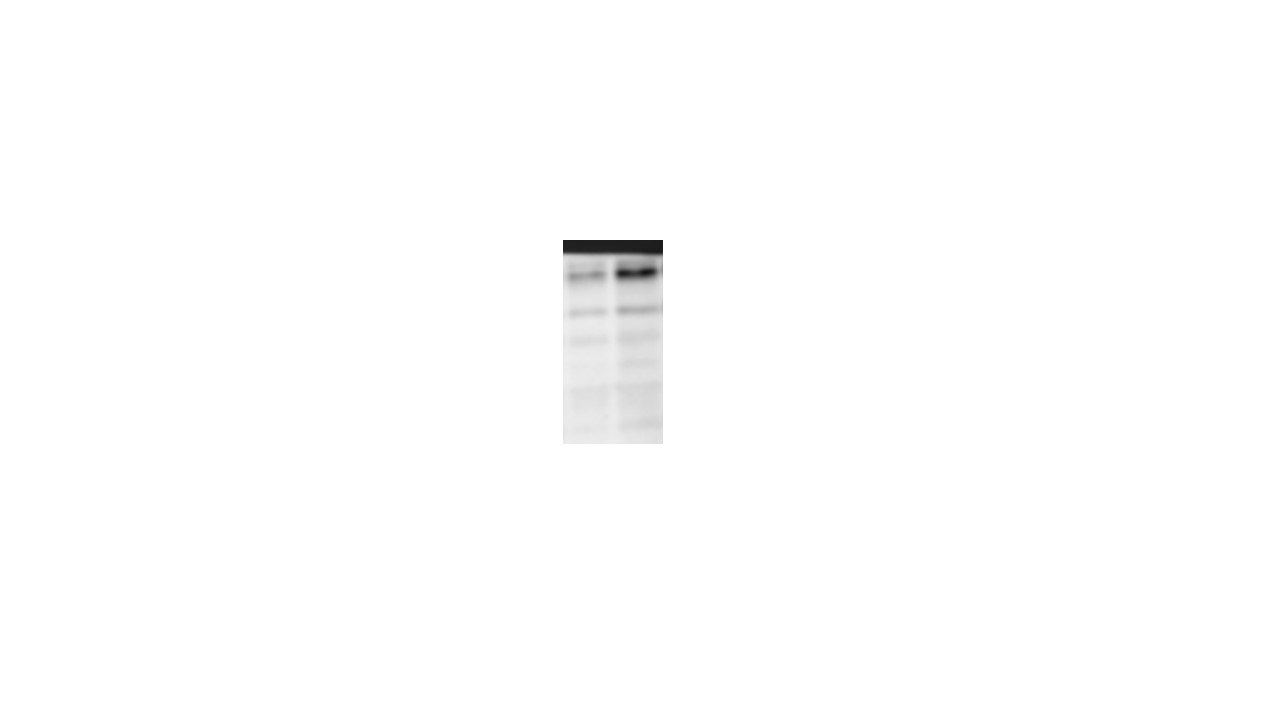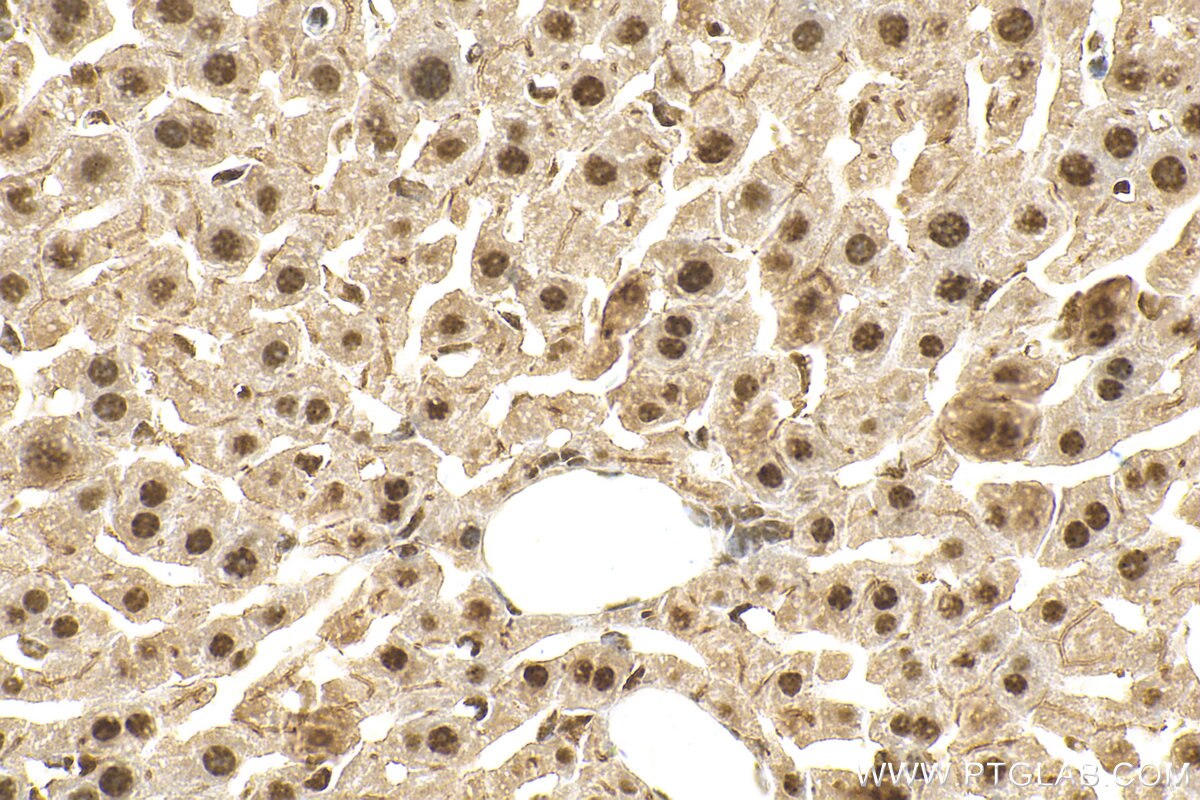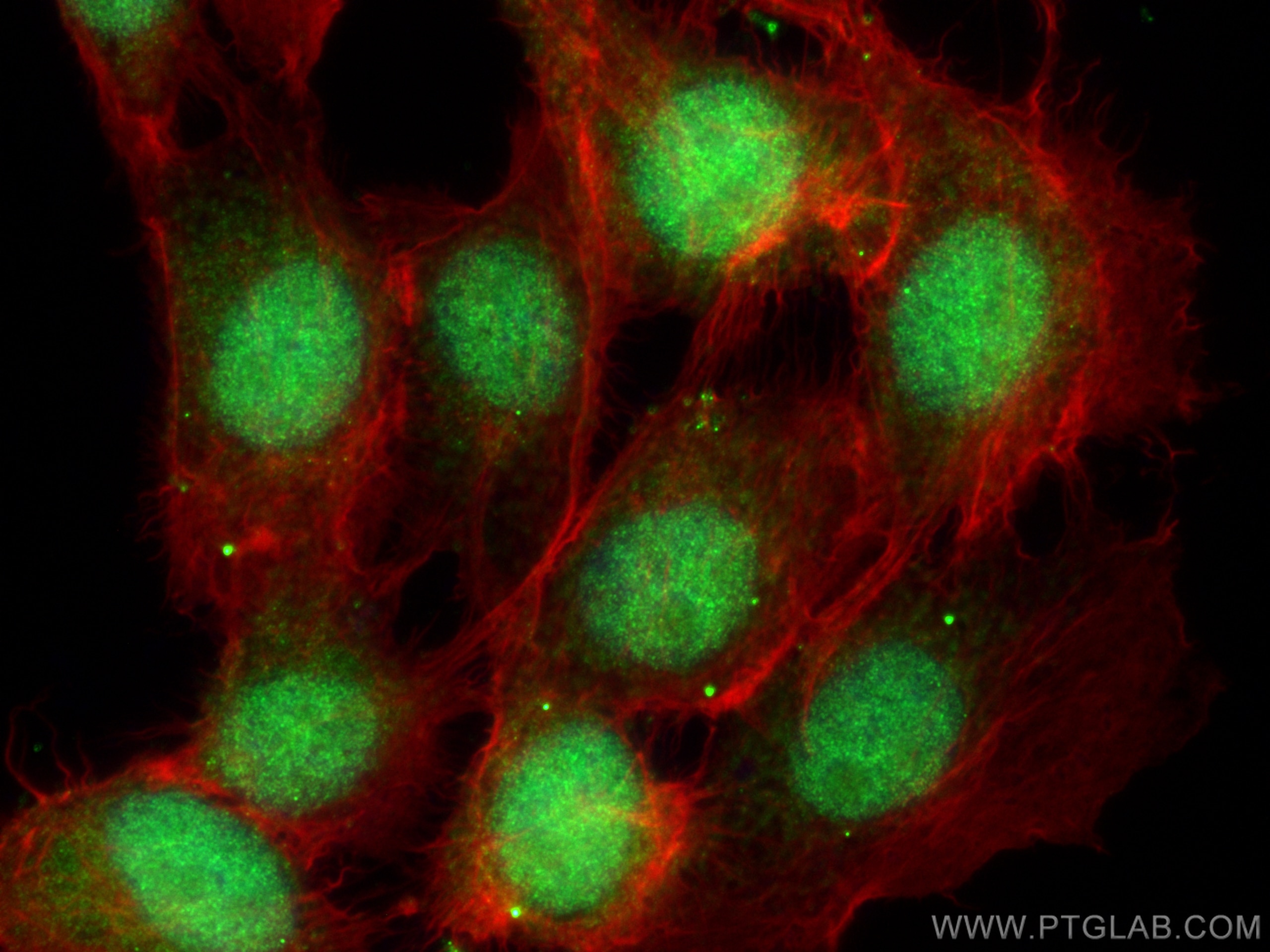Tested Applications
| Positive WB detected in | A549 cells, Transfected HEK-293 cells, HeLa cells, mouse skeletal muscle tissue, rat skeletal muscle tissue |
| Positive IP detected in | mouse heart tissue |
| Positive IHC detected in | mouse liver tissue Note: suggested antigen retrieval with TE buffer pH 9.0; (*) Alternatively, antigen retrieval may be performed with citrate buffer pH 6.0 |
| Positive IF/ICC detected in | A431 cells |
Recommended dilution
| Application | Dilution |
|---|---|
| Western Blot (WB) | WB : 1:500-1:1000 |
| Immunoprecipitation (IP) | IP : 0.5-4.0 ug for 1.0-3.0 mg of total protein lysate |
| Immunohistochemistry (IHC) | IHC : 1:50-1:500 |
| Immunofluorescence (IF)/ICC | IF/ICC : 1:200-1:800 |
| It is recommended that this reagent should be titrated in each testing system to obtain optimal results. | |
| Sample-dependent, Check data in validation data gallery. | |
Published Applications
| WB | See 31 publications below |
| IHC | See 4 publications below |
| IF | See 3 publications below |
Product Information
15125-1-AP targets OGG1 in WB, IHC, IF/ICC, IP, ELISA applications and shows reactivity with human, mouse, rat samples.
| Tested Reactivity | human, mouse, rat |
| Cited Reactivity | human, mouse, rat, pig |
| Host / Isotype | Rabbit / IgG |
| Class | Polyclonal |
| Type | Antibody |
| Immunogen |
CatNo: Ag7204 Product name: Recombinant human OGG1 protein Source: e coli.-derived, PGEX-4T Tag: GST Domain: 1-345 aa of BC000657 Sequence: MPARALLPRRMGHRTLASTPALWASIPCPRSELRLDLVLPSGQSFRWREQSPAHWSGVLADQVWTLTQTEEQLHCTVYRGDKSQASRPTPDELEAVRKYFQLDVTLAQLYHHWGSVDSHFQEVAQKFQGVRLLRQDPIECLFSFICSSNNNIARITGMVERLCQAFGPRLIQLDDVTYHGFPSLQALAGPEVEAHLRKLGLGYRARYVSASARAILEEQGGLAWLQQLRESSYEEAHKALCILPGVGTKVADCICLMALDKPQAVPVDVHMWHIAQRDYSWHPTTSQAKGPSPQTNKELGNFFRSLWGPYAGWAQAVLFSADLRQCRHAQEPPAKRRKGSKGPEG Predict reactive species |
| Full Name | 8-oxoguanine DNA glycosylase |
| Calculated Molecular Weight | 22 kDa, 36-40 kDa, 45-57 kDa |
| Observed Molecular Weight | 36-40 kDa, 45-50 kDa |
| GenBank Accession Number | BC000657 |
| Gene Symbol | OGG1 |
| Gene ID (NCBI) | 4968 |
| RRID | AB_2156780 |
| Conjugate | Unconjugated |
| Form | Liquid |
| Purification Method | Antigen affinity purification |
| UNIPROT ID | O15527 |
| Storage Buffer | PBS with 0.02% sodium azide and 50% glycerol, pH 7.3. |
| Storage Conditions | Store at -20°C. Stable for one year after shipment. Aliquoting is unnecessary for -20oC storage. 20ul sizes contain 0.1% BSA. |
Background Information
The DNA damages induced by ROS contain base modification, base loss, and DNA single strand breaks, which are usually repaired by the base excision repair (BER) pathway in both prokaryotes and eukaryotes. OGG1 (The human 8-oxoguanine glycosylase 1) is the primary enzyme in BER pathway, responsible for the excision of 7, 8-dihydro-8-oxoguanine (8-oxoG), a mutagenic base by product that occurs as a result of exposure to reactive oxygen species. There's 8 isoforms of OGG1, with calculated MW 22 kDa, 36-40 kDa and 45-57 kDa. The difference among these isoforms is the C-terminal (317-345aa). Our OGG1 antibody detects all the isoforms. We always got the strongest 47 kDa corresponds to isoform Beta in our detection and some weaker bands (with long time exposure). The expression amount of Beta is higher than other isoforms from our data. This antibody has been cited in more than 4 publications, WB and IHC detection in mouse and human.
Protocols
| Product Specific Protocols | |
|---|---|
| IF protocol for OGG1 antibody 15125-1-AP | Download protocol |
| IHC protocol for OGG1 antibody 15125-1-AP | Download protocol |
| IP protocol for OGG1 antibody 15125-1-AP | Download protocol |
| WB protocol for OGG1 antibody 15125-1-AP | Download protocol |
| Standard Protocols | |
|---|---|
| Click here to view our Standard Protocols |
Publications
| Species | Application | Title |
|---|---|---|
Crit Care Recombinant ACE2 protein protects against acute lung injury induced by SARS-CoV-2 spike RBD protein. | ||
Nat Commun Cis- and trans-resveratrol have opposite effects on histone serine-ADP-ribosylation and tyrosine induced neurodegeneration. | ||
Redox Biol Oxidative damage to lung mitochondrial DNA is a key contributor to the development of chemical lung injury | ||
PLoS Genet Heterozygosity for a hypomorphic polβ mutation reduces the expansion frequency in a mouse model of the fragile x-related disorders. | ||
JHEP Rep TAK1 deficiency promotes liver injury and tumorigenesis via ferroptosis and macrophage cGAS-STING signalling | ||
Phytomedicine Nrf2-dependent hepatoprotective effect of ellagic acid in titanium dioxide nanoparticles-induced liver injury |
Reviews
The reviews below have been submitted by verified Proteintech customers who received an incentive for providing their feedback.
FH Shubhangi (Verified Customer) (07-05-2024) | Excellent
 |
FH s (Verified Customer) (12-12-2022) | very good
 |
FH Ruyi (Verified Customer) (08-19-2019) | This antibody works well in my WB experiments.
|














